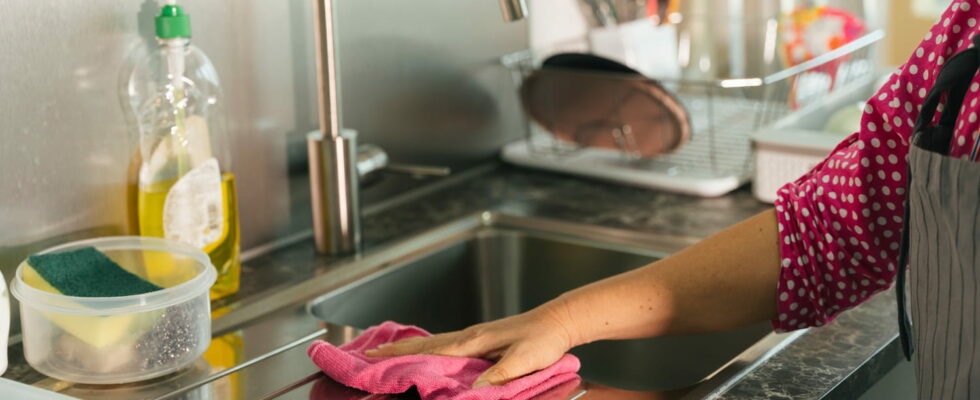Is your beautiful stainless steel sink getting dull? You can easily restore its original shine using only natural products. And in particular a simple potato!
Stainless steel is a particularly popular material in construction, especially in the kitchen. And for good reason! It is insensitive to corrosion, does not retain moisture or dirt, has excellent resistance to heat and temperature variations, and is very easy to maintain. In the long run, however, it tends to tarnish. Fingerprints are also quite difficult to remove and the sink can quickly end up covered in micro-scratches if you clean it with anything. But if maintaining a stainless steel sink can seem like a difficult task, it is possible to keep it impeccable and shiny thanks to a few simple and inexpensive tips.
To restore its former shine, you can use baking soda, a versatile and essential household product. Sprinkle generously on the stained areas of your sink, then add a little water to form a paste. Then rub gently with a non-abrasive sponge. Leave to act for about ten minutes before rinsing thoroughly with lukewarm water.
White vinegar is another very effective natural product for cleaning stainless steel. To remove water and limescale stains, spray pure white vinegar on the surfaces of your sink. Be careful, you must dilute it in lukewarm or cold water, using at least one part water to one part vinegar. If you use it pure, it could attack and stain your stainless steel! Leave it to act for a few minutes, then scrub with a soft sponge. The vinegar dissolves limescale deposits and leaves a shiny surface.
You can also use black soap, a gentle but extremely effective product. Thanks to the vegetable oils it contains, it will make your stainless steel surfaces shine. Place a few drops on a damp sponge for fragile surfaces, rub and then rinse with clean water. Composed of calcium carbonate, Meudon white is also a mild abrasive used to clean, polish and revive surfaces, including the most fragile. Mix it with water until you obtain a creamy paste and rub with a damp cloth or sponge, before rinsing.
These tips are pretty standard, but another, more unusual one might surprise you: the potato trick. The starch contained in the potato has cleaning properties that are particularly effective on stainless steel. Simply cut the potato in half and scrub the inside of the sink with it. Focus on stained areas and scratches. The starch absorbs the dirt and leaves a shiny surface. Gradually cut off the dried end. After leaving it to act for a few minutes, rinse thoroughly with clean water and wipe with a clean, dry cloth.
In the same vein, you can use a lemon. Its acidity helps to remove stubborn marks. Simply pass your half lemon over your sink, let it sit and rinse. In addition to being economical and ecological, these two techniques are a natural alternative to the chemical products often used for maintaining stainless steel. You will be surprised by the result!
